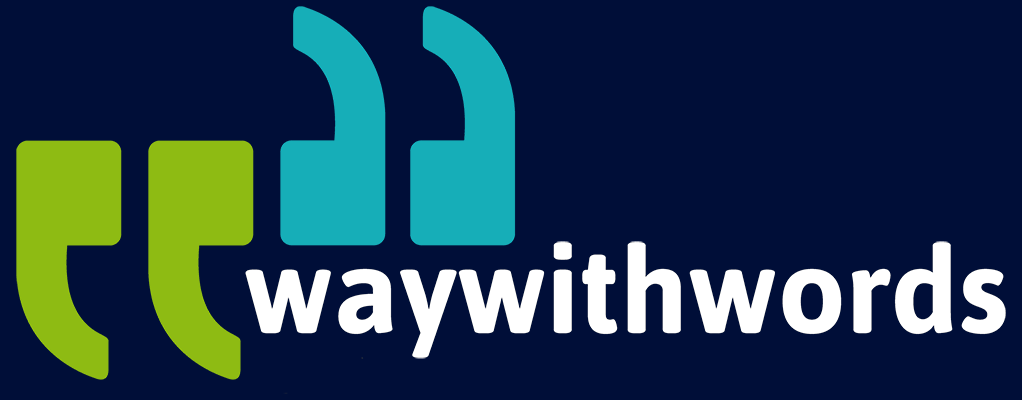Why Is Tonal Variation Essential in African and Asian Languages?
Building Inclusive and Culturally Relevant Speech Systems
Tonal languages are among the most intricate and fascinating linguistic systems in the world. They rely not only on consonants and vowels to convey meaning but also on pitch variations – subtle or dramatic changes in voice tone – to differentiate one word from another. For speakers, tonal distinctions are second nature, processed effortlessly in daily communication. For machines, however, replicating this ability is anything but simple.
In the field of speech technology, particularly automatic speech recognition (ASR) and text-to-speech (TTS), the importance of tonal variation cannot be overstated, so speech data anomalies are key to check. When tone is ignored or inadequately represented, the result can be a cascade of misunderstandings – from minor confusion in a casual conversation to serious errors in critical applications such as medical interpretation or legal transcription.
African and Asian languages, from Yoruba and Zulu to Mandarin and Thai, represent a significant portion of the world’s linguistic diversity. Yet their tonal complexity often makes them some of the most underrepresented in speech data collections. For developers, linguists, and AI trainers, understanding how to capture, annotate, and integrate tone into machine learning models is an essential step toward building truly inclusive, accurate, and culturally relevant speech systems.
This article explores the essence of tonal languages, the challenges of recording them accurately, the limitations of tone-blind speech models, the intricacies of tone annotation, and the wide-ranging applications of tone-aware ASR models.
Understanding Tonal Languages
To appreciate why tone matters, it’s necessary to understand what tonal languages are – and what they are not. In non-tonal languages like English, pitch changes in speech generally convey emotion, emphasis, or sentence type (for example, a rising pitch at the end of a question). In tonal languages, however, pitch changes are an integral part of a word’s identity. Altering the tone can completely change its meaning, even if the consonants and vowels remain the same.
Take Mandarin Chinese as an example. The syllable “ma” can mean “mother,” “hemp,” “horse,” or “scold” depending on whether the pitch rises, falls, stays level, or follows a fall-rise contour. Similarly, in Yoruba – a major West African language spoken in Nigeria and beyond – the word “owo” can mean “money,” “broom,” or “hand” depending on whether it is spoken with high, low, or mid tones.
There are different types of tonal systems:
- Register tone systems use discrete pitch levels (e.g., high, mid, low).
- Contour tone systems involve changes in pitch over the course of a syllable (e.g., rising, falling, or combinations).
- Many languages combine both registers and contours for added complexity.
Tone systems are not rare anomalies – they are widespread. Estimates suggest that 60–70% of the world’s languages are tonal. Africa and Asia are home to large clusters of these languages, including Bantu languages (Zulu, Shona), Sino-Tibetan languages (Mandarin, Cantonese), Tai-Kadai languages (Thai, Lao), and many more.
For ASR and TTS systems, the takeaway is simple: without precise tone recognition, meaning is lost. Recognising and reproducing tone is not an optional enhancement; it is a fundamental requirement for functional language processing in these linguistic environments.
Challenges in Capturing Tone Accurately
Capturing tonal variation is one of the most technically demanding aspects of speech data collection. Unlike basic phoneme recognition, where a recording device only needs to capture the sequence of sounds, tone-sensitive recording requires preserving exact pitch contours and relative pitch differences between syllables.
Key challenges include:
- Pitch Preservation: Many low-quality recording devices compress audio in ways that flatten or distort pitch. This can result in tonal distinctions being blurred or lost altogether. Even subtle pitch shifts – critical in tone recognition – can be masked by background noise or inadequate sampling rates.
- Speaker Prompting: In tonal languages, speakers may naturally reduce pitch variation in certain contexts, such as when speaking to non-native listeners or reading from a script. Prompt design should encourage natural speech and spontaneous tone use, rather than unnatural monotone delivery.
- Environmental Noise: Even minimal interference – a fan, wind, or distant conversation – can introduce noise into the frequency ranges where tone distinctions occur, leading to degraded training data.
- Consistency Across Recordings: If pitch capture varies across sessions or speakers, ASR models may misinterpret tone as speaker variation rather than linguistic structure. Consistency in microphone placement, recording format, and acoustic conditions is essential.
- Dialectal Tone Variation: In many languages, tone patterns vary regionally. For example, the same word in one dialect might use a high tone while another uses a rising tone. This variation needs to be represented to ensure broad model applicability.
For developers and linguistic fieldworkers, the lesson is clear: a focus on high-fidelity audio capture, coupled with careful speaker instruction, is vital to preserving tone integrity. Without it, the foundation of the dataset is compromised before the model training even begins.
Speech Model Limitations Without Tonal Data
When ASR or TTS models are trained on data that ignores tonal variation, the results can range from mildly inconvenient to dangerously misleading. Tone-blind models often:
- Confuse words that share the same segmental sounds but differ in tone, resulting in incorrect transcription or synthesis.
- Produce text outputs that are semantically nonsensical in context.
- Misinterpret sentence boundaries or focus points, particularly in languages where tone also interacts with intonation patterns at the phrase level.
- Fail to capture local dialectal distinctions that are essential for user trust and acceptance.
Consider healthcare settings. A tone-insensitive model transcribing a doctor’s notes in a tonal language could confuse “medicine” with “poison,” “high” with “low,” or “pain” with “calm” – potentially leading to dangerous misunderstandings. In education, a language-learning app might teach incorrect tones, leading learners to produce speech that is incomprehensible or offensive to native speakers.
From a user perspective, tone errors can also undermine confidence in the technology. Speakers of tonal languages quickly notice when an AI system fails to respect tonal rules, and this erodes both usability and trust.
The deeper issue is that tone is not an optional linguistic ornament; it is a structural pillar of meaning. Speech models that exclude tone are incomplete by design. For ASR developers, the only sustainable solution is to integrate tone-sensitive data from the outset.

Annotation of Tone in Transcription
Recording tone is only the first step. To make tone data useful for model training, it must be accurately annotated. Tone annotation is the process of marking pitch variations in a transcription so that they can be correlated with the corresponding audio.
Common approaches include:
- Tone Markers: Many orthographies use diacritics to mark tones directly on vowels, as in the pinyin system for Mandarin or the Romanised Yoruba script. For example, “má” (high-rising tone) vs. “mà” (low tone).
- Pitch Contour Labelling: Linguists often use numeric notation (1–5) to represent pitch height and movement. In Mandarin, “ma” with a high tone is marked as “ma55” (steady high), while a rising tone might be “ma35.”
- Phonetic Notation Systems: The International Phonetic Alphabet (IPA) provides symbols for tone levels and contours, allowing fine-grained phonetic analysis.
- Time-Aligned Annotations: For ASR training, tone labels often need to be synchronised with precise timestamps in the audio, enabling models to link tone contours to specific syllables.
The challenge lies in balancing linguistic precision with scalability. Detailed annotation can be labour-intensive, especially for large datasets. However, cutting corners risks introducing noise or ambiguity into the training data. The ideal approach often involves a hybrid method – using automated pitch detection as a first pass, followed by human verification for accuracy.
Annotation is also an opportunity to capture variation. If multiple dialects or speaker profiles are represented, annotators can flag regional tone patterns or tone sandhi (tone changes that occur in certain phonetic contexts). These details help models learn the full tonal landscape of a language rather than an oversimplified version.
Applications for Tone-Rich ASR Models
The benefits of tone-aware ASR and TTS models extend far beyond basic transcription. When pitch variation is faithfully captured, annotated, and integrated into speech models, it enables a wide range of applications that directly serve tonal language communities.
- Education: Language-learning apps can teach accurate pronunciation and provide feedback on tone production, helping learners sound natural and be understood.
- Text-to-Speech: Tone-sensitive TTS systems produce more natural and intelligible speech, especially in languages where incorrect tone renders the output nonsensical.
- Localisation: Multinational companies can offer truly localised voice interfaces for products, from customer service chatbots to navigation systems, in markets where tonal languages are spoken.
- Healthcare Technology: Accurate tone recognition is critical in telemedicine, patient data recording, and AI-assisted diagnostics for tonal language speakers.
- Language Preservation: Many tonal languages are under threat from globalisation. High-quality tone-rich datasets can support preservation efforts, enabling digital archives, educational tools, and community language revitalisation projects.
In all these cases, tone is not simply an aesthetic feature. It is the key to making ASR and TTS systems genuinely functional in these linguistic contexts. Without it, technology risks excluding millions of speakers from the benefits of voice-driven interfaces.
Further Resources on Tonal Language Speech Data
Tone (linguistics) – Wikipedia – Explains the linguistic concept of tone, tonal systems, and their role in spoken languages worldwide.
Way With Words: Speech Collection – Way With Words excels in real-time speech data processing, leveraging advanced technologies for immediate data analysis and response. Their solutions support critical applications across industries, ensuring real-time decision-making and operational efficiency.
